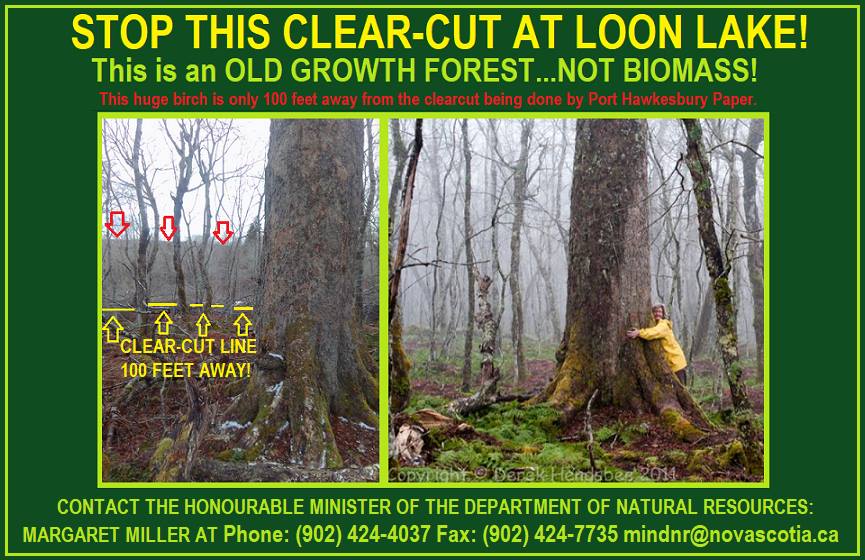The conflict over clearcutting in Nova Scotia could hardly be presented more graphically than in the poster above, which I just received.
In May I posted an item about proposed clearcuts near the Loon Lake Nature Reserve in Guysborough Co. Although many protests were likely sent in to NSDNR, looking at the Harvest Plan Map Viewer now suggests they had little if any effect, and the proposed cutting is taking place now much to the chagrin many who know and love that area, and threatening the integrity of the Loon Lake Nature Reserve.
View More cutting near Nova Scotia Protected Areas…now Loon Lake Nature Reserve (Post May 24, 2017).
Once the cutting is completed, those proposed cuts will be removed from the Harvest Plan Map Viewer, which also does not illustrate cuts on private lands. The highly technical process for approving harvests on Crown lands – the PTAs or Pre-Treatment Assessments – which allow ministers to say that harvest decisions are “scientifically based” involve essentially none of the landscape level planning that is needed to maintain a whole suite of species – and human enterprises – dependent on older forests.
It’s not that NSDNR hasn’t thought of it, they have but they just haven’t got around to doing it yet. In response to queries about landscape level planning forwarded to NDSNR by the Halifax Field Naturalists, NSDNR commented:
Currently, a landscape level planning pilot project is underway which is expected to lead to planning procedures available for broad implementation in 2018.
Go figure.
The Department’s website defines forest sustainability as “the maintenance and enhancement of the long-term health of a forest ecosystem for the benefit of all living things while providing environmental, economic, social and cultural opportunities for present and future generations.”
Wouldn’t “the maintenance and enhancement of the bottom line of Industrial Forestry in Nova Scotia regardless of the long-term health of the forest ecosystem and environmental, economic, social and cultural opportunities for future generations” better characterize NSDNR’s forest management to date?

